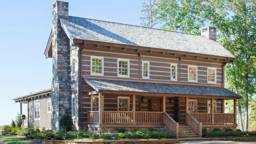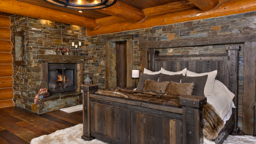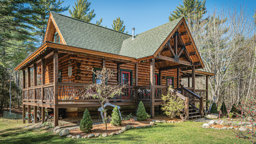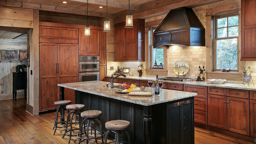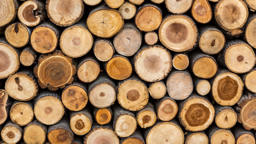_11868_2023-12-20_08-12.jpg)
These days, as you’re shopping for anything from tomatoes to trucks, the term “hybrid” is thrown around … a lot. Now, even modern homes may be categorized as hybrids – especially in the log and timber home space, but what does that mean, exactly?
The definition has morphed over time. It could be as simple as contrasting a full-log home with one that’s built with conventional stud walls that are enclosed with applied half-logs. It’s also the complex intertwining of several building systems, such as full logs and timber framing, into one cohesive home. The definition is vague and depends on who is providing it.
So let’s begin at the beginning. In a “true” log home or a “true” timber frame home, its components are made up, obviously, of wood. In the case of a log home, you have wood walls — potentially through the gables — and, possibly, an exposed-wood rafter system. From tip-to-tip, it’s logs.
The hybrid version of that is when we start incorporating other materials for ease of construction, additional energy efficiency and/or availability of components. Even a full-log perimeter with conventional framing in the roof, prefab trusses and gables comprised of another material, like cement-board cladding, can be considered “hybrid.”
For a long time, the wood-home industry shunned the idea of mixing building methodologies. Log homes were log homes. Timber frames were timber frames. And conventional “stick frame” construction? We don’t talk about it.
Over the past decade, the industry has started to adapt to the idea of the hybrid system, and recently it’s picked up noticeable momentum for a variety of reasons.
For starters (and as with most things), buyer demand has been a driving force behind the increase in hybrid log and timber homes. Fifteen years ago, this was decidedly not the case. Buyers who wanted a log home, for example, were dead set on logs and ONLY logs.
Today’s wood-home buyer is looking for more than just the inherent beauty of the wood, and reasons from aesthetic flexibility to reduced maintenance to affordability are behind this movement. They want the rustic look and the lifestyle, but they also want their homes to feel crisp and modern. This dichotomy is what’s pushing people in the hybrid direction because these goals are more easily achieved in a home that mixes materials and architectural styles.
_11868_2023-12-20_08-14.jpg)
Another factor that’s been driving hybrid homes is the availability (or lack) of skilled, specialized labor. The popularity of natural wood homes, and the flexibility for buyers to move to remote locales long before retirement, means that these houses are being built in areas where seasoned log home builders or timber framers may not be prevalent. Accommodating for settlement around windows in a log home or assembling a timber frame bent takes knowhow. By blending the logs or timbers with more universally practiced forms of construction deepens the labor pool, giving homeowners more options. Plus, in many cases, it has the added benefit of accelerating the construction timeline, allowing buyers to become owners that much faster.
Local energy codes are another reason hybrids — log homes in particular — are seeing a surge. Some markets have adopted very strict guidelines when it comes to R-values, and while log systems are scientifically proven to be highly energy efficient, as a material, logs may struggle to meet a specific market’s energy-code mandate. So the addition of components recognized for superior energy efficiency, like insulated concrete form (ICF) foundations or structural insulated panels (SIPs) in the roof system or alongside logs, such as in wings flanking a full-log core, can help ease the minds of code officials.
Fortunately for timber homes, providers have been wrapping their frames in SIPs and similar systems for eons, so they enjoy exceptional R-values straight out of the gate. In fact, you could say that timber-framed homes are the quintessential hybrid home, as they have always been comprised of several building systems to make a weathertight envelope. But even timber homes have seen some level of hybridization, such as blending a timber-framed core (i.e., the great room and kitchen space) with conventionally built wings in an effort to save money.
There will always be a market for full-log and true timber frame houses. These modes of construction have endured for centuries for two important reasons: People are passionate about them, and they hold up over time.
But there are more ways to instill the charm of logs and timbers besides building the entire structure out of these materials. From log and heavy-timber accents in staircases, balusters and handrails to accent walls to non-load-bearing posts, beams and trusses to, of course, combining building systems in a whole-house way, you can infuse your home with the beauty of wood at a price you’re comfortable with.
Dan Mitchell is a builder and a log and timber home educator. He owns Eagle CDI, a construction and development firm based near Knoxville, Tennessee.





